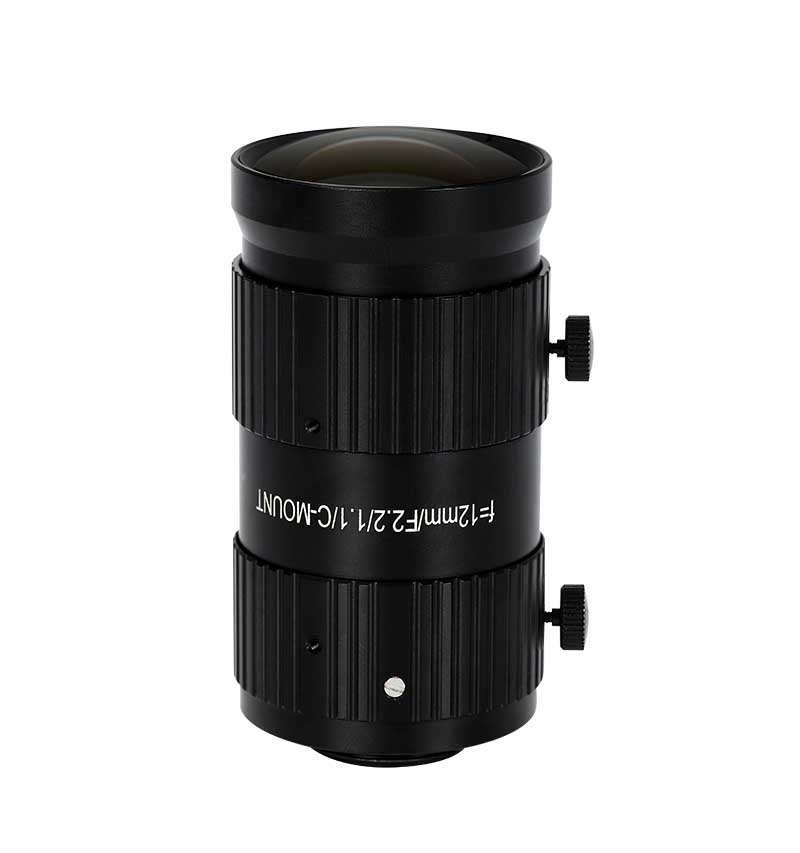Analysis of the influence of industrial lens resolution on image quality

In the machine vision system, the resolution of the industrial lens is one of the key factors to determine the image quality. With the continuous improvement of detection accuracy requirements for intelligent manufacturing, the resolution of industrial lenses has been upgraded from the traditional megapixel level to the 10-megapixel level, which not only changes the way of image acquisition, but also profoundly affects the performance of the entire machine vision system. From microscopic defect detection to macroscopic size measurement, from still image acquisition to dynamic process monitoring, the resolution of industrial lenses directly affects the presentation of image details and the accuracy of subsequent analysis.
First, the impact of resolution on image details
Spatial resolution determines the ability to render detail in an image. High-resolution industrial lenses can capture more subtle features, in semiconductor detection, 50 megapixel industrial lenses can clearly show 10 micron level defect features, while ordinary megapixel lenses can only identify defects above 50 microns. This difference in the ability to capture details directly affects the accuracy and reliability of the detection.
In terms of feature recognition, the advantages brought by high resolution are more obvious. In precision parts inspection, high-resolution lens can clearly present the texture features and edge details of parts, and provide richer information for feature recognition algorithms. Experiments show that increasing the lens resolution from 5 million pixels to 20 million pixels can improve the accuracy of feature recognition by more than 40%.
The impact on the detection accuracy is the most direct effect of resolution improvement. In dimensional measurement applications, high-resolution lenses can increase measurement accuracy by an order of magnitude. For example, in an auto parts inspection, the use of 12 megapixel lenses can increase the measurement accuracy from 0.1mm to 0.01mm, meeting more stringent process requirements.
Second, the relationship between resolution and image processing
High-resolution images provide a richer data base for algorithm processing. In surface defect detection, high-resolution images can present microscopic features of defects, enabling deep learning algorithms to classify and identify them more accurately. In the detection of an electronic product, the image resolution was increased from 2 million pixels to 8 million pixels, and the accuracy of defect classification was increased by 35%.
The impact on processing speed is a challenge posed by high resolution. The amount of data in high-resolution images is increasing exponentially, which puts higher demands on image processing algorithms and hardware. By using GPU acceleration and intelligent compression algorithms, processing speed can be increased by more than 5 times while maintaining image quality.
High-resolution images present new challenges in terms of storage and transmission. A single image of 20 million pixels can reach 60MB, which puts higher requirements on storage systems and transmission networks. Using a new compression algorithm and 5G transmission technology, image transmission time can be reduced by 80%, while ensuring image quality.
3. Technical and economic analysis of resolution selection
In the balance between resolution and cost, application requirements and economy need to be considered comprehensively. For general industrial inspection, 12 megapixel lenses can meet most needs; For precision detection, you need to choose a high-resolution lens with more than 20 million pixels. Reasonable resolution selection can save more than 30% of the cost.
Matching with the application scene is the key to resolution selection. In fast moving object detection, too high resolution may lead to blurred image, so it is necessary to balance resolution and shutter speed. In static precision measurement, high resolution should be given priority. Through scenario-based analysis, you can optimize resolution selection and improve the overall system performance.
The overall impact on system performance needs to be fully assessed. High-resolution lenses not only affect the image quality, but also put forward higher requirements for light source, transmission, processing and other links. In the practice of a smart factory, through systematic optimization, the overall cost is controlled within the budget range while improving the resolution, and the balance between performance and cost is achieved.
The resolution of industrial lens has an all-round and multi-level impact on image quality. From the presentation of image details to the improvement of detection accuracy, from the effect of algorithm processing to the optimization of system performance, the choice of resolution needs to consider the technical performance and economy. With the advancement of technology, the resolution of industrial lenses is still improving, but reasonable selection and optimized use is the key to maximize its value. In the future, with the application of artificial intelligence algorithms and new sensors, the resolution of industrial lenses will be deeply integrated with image processing technology to provide more powerful visual perception for intelligent manufacturing. In this process, the in-depth understanding and scientific application of the impact of resolution will become an important way to improve the performance of machine vision systems.
